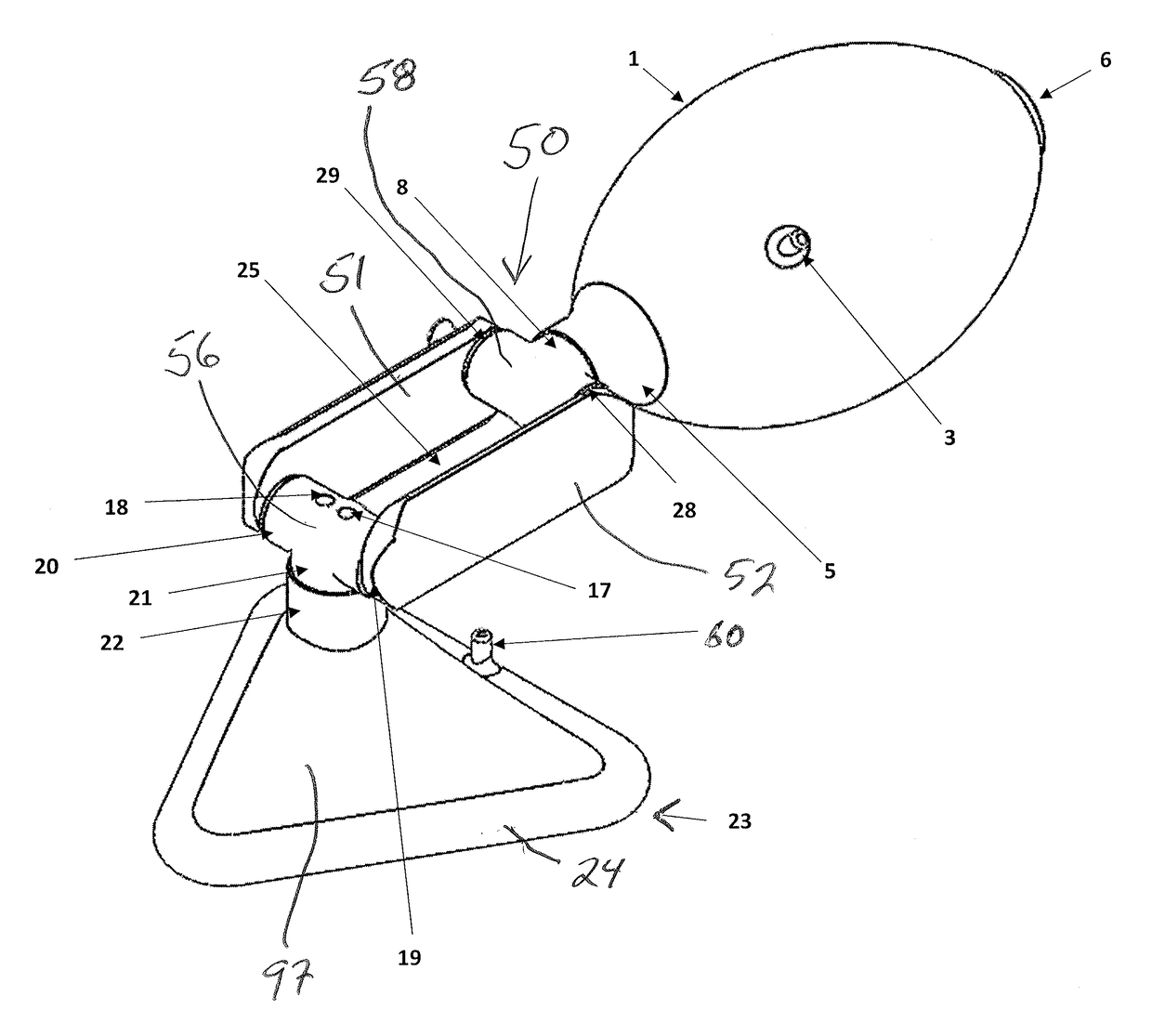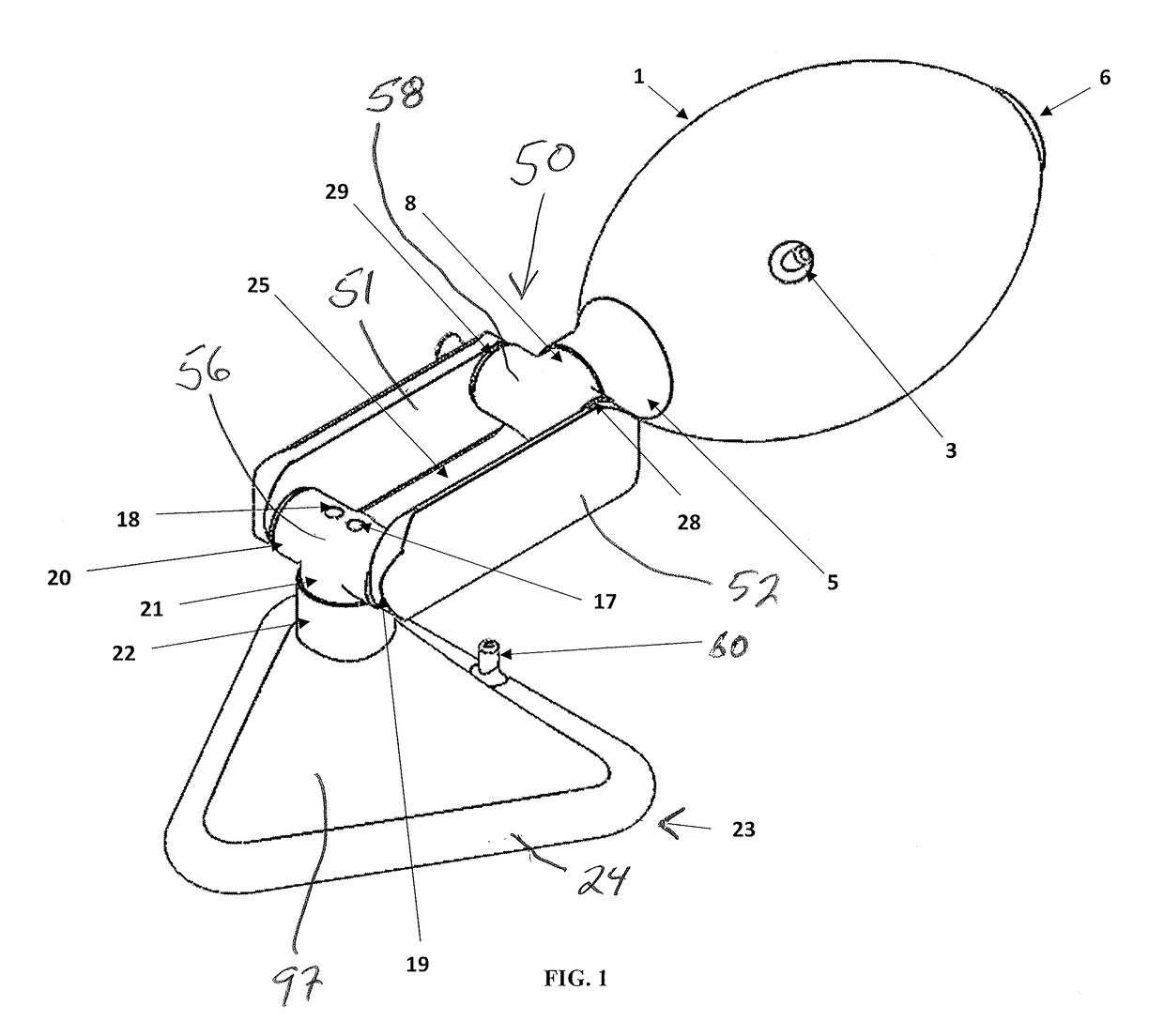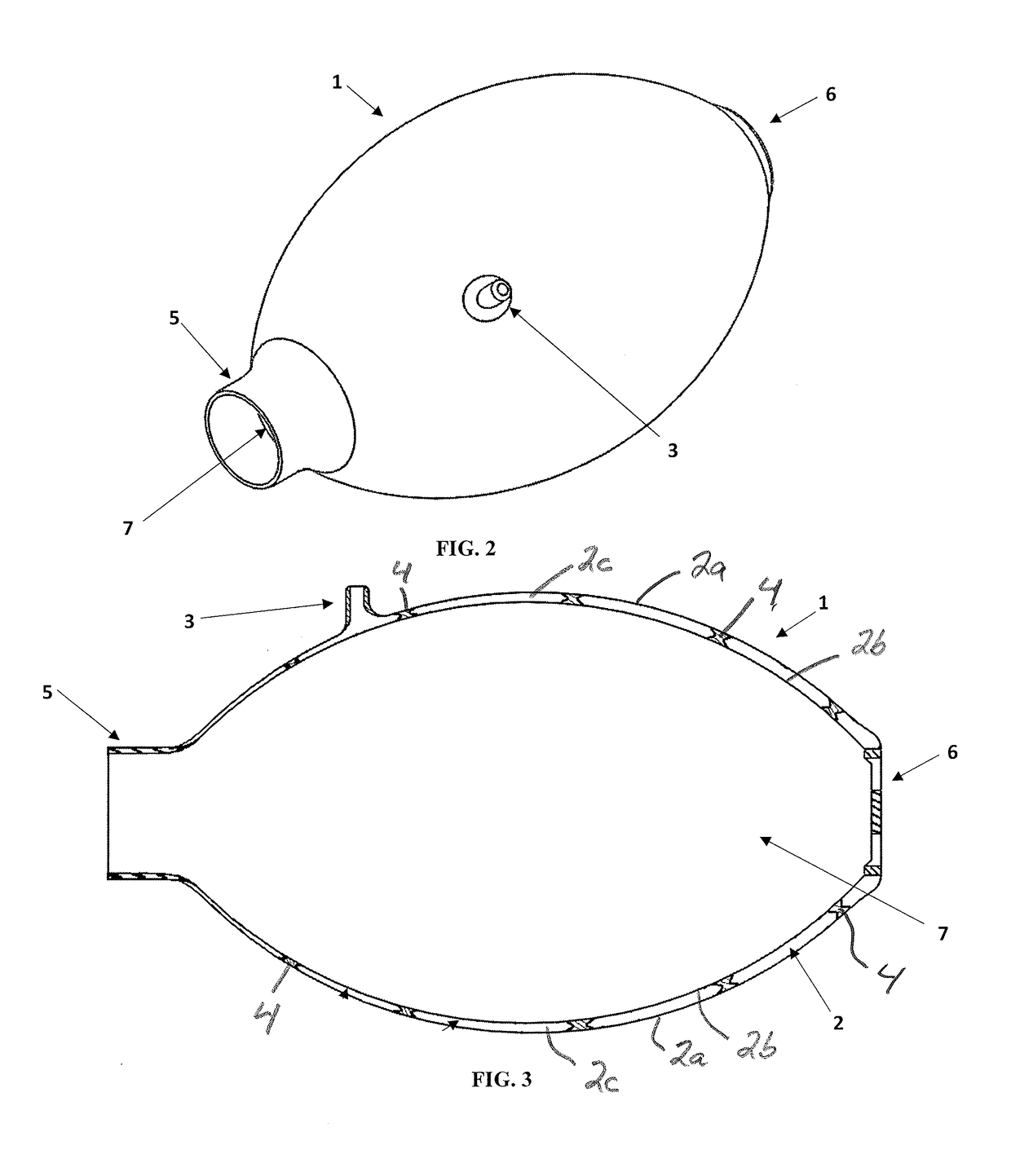Bag-valve-mask
- Summary
- Abstract
- Description
- Claims
- Application Information
AI Technical Summary
Benefits of technology
Problems solved by technology
Method used
Image
Examples
Embodiment Construction
[0039]For the purpose of explanation, the terms “front”, “back”, “left”, “right”, “upper”, “lower”, “top”, “bottom”, and similar terms shall correspond to the device as positioned in the figures (above / below). The device may assume alternate orientations other than those shown. It is understood that the device characterized in the attached drawings and described thereafter are exemplary orientations of the innovative concepts defined in the claims section of this patent. Hence, the specific physical characteristics shown are not to be considered limiting unless explicitly stated. The device shown may alter in size depending on its need.
[0040]The following description relates to above figures.
[0041]With reference to the Figures, the bag-valve-mask described and shown herein includes a self-inflating bag 1 as shown in FIG. 1 comprised of an inflatable (or in some other way expandable) bilayer 2, including an outer layer 2a and an inner layer 2b, as shown in FIG. 3. This inflatable bil...
PUM
 Login to View More
Login to View More Abstract
Description
Claims
Application Information
 Login to View More
Login to View More - R&D
- Intellectual Property
- Life Sciences
- Materials
- Tech Scout
- Unparalleled Data Quality
- Higher Quality Content
- 60% Fewer Hallucinations
Browse by: Latest US Patents, China's latest patents, Technical Efficacy Thesaurus, Application Domain, Technology Topic, Popular Technical Reports.
© 2025 PatSnap. All rights reserved.Legal|Privacy policy|Modern Slavery Act Transparency Statement|Sitemap|About US| Contact US: help@patsnap.com



